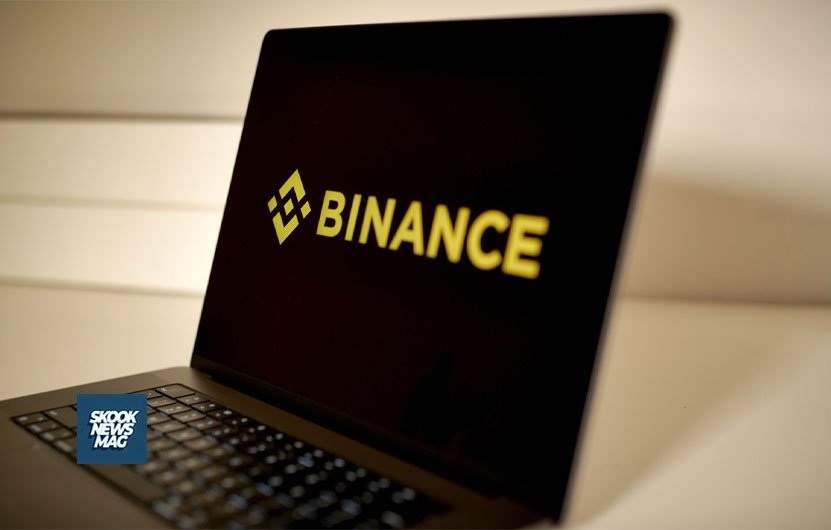Emerging Crypto Categories And Their Potential For Investment
The crypto market has seen tremendous growth over the past few years. While Bitcoin and Ethereum continue to dominate in terms of market capitalization, new and innovative crypto categories are emerging that show great potential for investment. Investing in these emerging categories early on provides an opportunity to get exposure to promising projects before they gain widespread adoption.
Some of the top emerging crypto categories that investors should keep an eye on are:
- Decentralized Finance (DeFi)
- Non-Fungible Tokens (NFTs)
- Stablecoins
- Layer 1 and Smart Contract Platforms
- Metaverse, Gaming, Governance tokens
These new categories are building real-world use cases for blockchain technology and attracting significant developer talent and investment capital. As these spaces continue to grow, the crypto projects at the forefront have the potential to generate sizable returns for early investors.
However, these emerging categories also come with higher risk compared to established cryptocurrencies like Bitcoin. Thorough research is required to identify the most promising projects to invest in. This article provides an overview of some of the top emerging crypto categories, along with the benefits and risks, to consider when evaluating investment potential.
DeFi (Decentralized Finance)
Decentralized finance (DeFi) aims to recreate traditional financial systems like lending, borrowing, derivatives, insurance, exchanges, and more using decentralized blockchain technology. DeFi eliminates intermediaries like banks and allows people to directly interact with financial services in a peer-to-peer manner.
Definition and Explanation of DeFi
DeFi refers to an open-source, permissionless, and decentralized financial service ecosystem that is available to anyone with an internet connection. The services allow users to lend, borrow, trade, invest, and make payments directly on the blockchain without requiring middlemen like banks or brokers.
DeFi applications are built on top of blockchain networks like Ethereum and allow digital assets and cryptocurrencies to be used for providing financial services. Smart contracts execute and settle transactions automatically based on predefined conditions coded into the contract. This eliminates the need for intermediaries and allows decentralized apps to provide traditional financial instruments.
Some popular types of DeFi services include:
- Decentralized Exchanges (DEXs): Allow peer-to-peer cryptocurrency trading without centralized intermediaries.
- Lending/Borrowing: Enable users to lend out cryptocurrencies to earn interest or borrow cryptos by using other tokens as collateral.
- Stablecoins: Maintain price stability against fiat currencies to minimize volatility.
- Synthetic Assets: Mimic real-world assets like stocks, commodities, indexes as tokenized derivatives.
- Insurance: Hedge against risks on smart contracts through pooled funds and tokenized policies.
- Asset Management: Invest crypto assets using decentralized fund management protocols.
Benefits and Risks of Investing in DeFi
DeFi presents a major investment opportunity as it aims to revolutionize finance in the same way email disrupted postal services. According to DefiPulse, over $41 billion is currently locked in DeFi protocols, indicating rapid growth. The advantages and disadvantages of investing in DeFi include:
Benefits
- Innovationpotential – DeFi is continuously evolving with new protocols and models. Investing early allows exposure to innovative projects before widespread adoption.
- Transparency – All transactions are visible on the public blockchain, enabling external auditing of protocols.
- Interoperability – Open standards like ERC-20 tokens allow protocols to smoothly interact with each other.
- Accessibility – Anyone across the globe can utilize DeFi with an internet connection and crypto wallet. Geographic and eligibility restrictions are eliminated.
- Efficiency – Automated smart contracts cut out middlemen costs and delays compared to traditional finance.
- High Interest Rates – DeFi lending/borrowing yields are generally much higher than conventional interest accounts.
- Trading Opportunities – Volatile crypto assets present opportunities for savvy crypto traders on DEXs.
Risks
- Technical Risks – Smart contract bugs or hacks can lead to loss of funds with limited recourse options.
- High Volatility – DeFi tokens are subjected to huge speculative swings, increasing downside risk.
- Regulatory Uncertainty – The lack of clear regulations raises questions around legal compliance for protocols and users.
- Early Stage Issues – Most DeFi applications are still new and have low liquidity or unproven product-market fit. Failure rates are high.
How to Invest in DeFi
Here are some approaches for gaining exposure to the DeFi ecosystem:
- Buy governance tokens: Governance tokens like UNI (Uniswap), AAVE (Aave) or MKR (Maker) grant holders voting rights on protocol changes. Their value tends to increase with protocol adoption.
- Provide liquidity to DeFi protocols: Users can provide crypto asset pairs needed to facilitate trades on exchanges, lending, etc for earning LP fees.
- Stake/Lend crypto assets: Deposit tokens into lending protocols to earn interest, or stake them to help secure a network while earning rewards.
- Use stablecoin yield strategies: Lend out stablecoins or provide liquidity for stablecoin trading pairs on DEXs to gain steady yield.
Examples of Successful DeFi Projects
Here are some of the most widely used and successful DeFi protocols that are worth tracking:
Uniswap: Decentralized exchange with the highest 24-hour trading volume at over $1 billion. Enables trading and liquidity provision for ERC-20 token pairs.
Aave: Leading decentralized lending and borrowing protocol with over $2.8 billion in total value locked. Allows users to lend and borrow crypto assets at variable or stable interest rates.
Yield Farming Aggregators: Autofarm, Beefy Finance, Yearn Finance automate yield generation across protocols while optimizing returns. Simplifies earning yield on crypto assets.
Synthetix: Derivatives liquidity protocol that facilitates trading of synthetic asset classes like commodities, stocks and indexes with over $923 million locked.
Chainlink: Decentralized price feed oracle network that securely feeds external data like crypto prices into smart contracts required for DeFi transactions.
NFTs (Non-Fungible Tokens)
Non-fungible tokens, or NFTs, have become one of the most hyped emerging crypto categories in 2021. NFTs experienced meteoric growth, with over $10.7 billion in trading volume during Q3 2021 across various NFT marketplaces.
Definition and Explanation of NFTs
NFTs are unique cryptographic tokens that represent ownership of rare digital or physical assets like art, collectibles, music, videos, virtual real estate, etc. Each NFT has a unique identifier and metadata that distinguishes it from other NFTs, even if they are copies of the same underlying asset.
Unlike fungible cryptocurrencies like Bitcoin that can be mutually exchanged, NFTs are not interchangeable with each other. The authenticity and proof of ownership is established on the blockchain by minting NFTs. Owners can buy, sell or trade NFTs via crypto wallets in marketplaces.
NFTs also incorporate smart contracts to automate royalty payments to creators, control resales, add licensing terms or access rights for assets. Overall, NFTs provide verifiable digital scarcity, uniqueness and ownership for virtual assets.
Benefits and Risks of Investing in NFTs
NFTs have exploded onto the crypto scene as digital collectibles, establishing an entirely new asset class. But they remain highly speculative as an investment option.
Benefits
- Support artists and creators through direct funding streams and royalties
- True ownership of scarce digital assets verified on blockchain
- Earn profits by reselling hyped NFTs at higher valuations
- Potential to enjoy exclusive access, content or utilities through NFTs
- Draw public attention as an influential early adopter of new technology
Risks
- Very speculative valuation with high volatility
- Lack of consistent demand and liquidity outside of hype cycles
- Platform and smart contract risks that can lead to asset loss
- Pump and dump schemes are common for driving short-term price spikes
- Intellectual property issues around unauthorized NFTs of existing works
How to Invest in NFTs
Here are some tips for gaining exposure to the NFT market:
- Buy NFT artworks on leading NFT marketplaces like OpenSea, Rarible, SuperRare etc. Look for emerging artists and verified creators.
- Invest in sought-after NFT collections like CryptoPunks, Bored Apes Yacht Club etc. that command high valuations.
- Mint new project NFTs during initial sales periods before wider market availability. Identify genuine projects with roadmaps and community buy-in.
- Earn NFTs through participation in community contests, events or via airdrops used as marketing campaigns for launches.
- Flip hyped NFTs by buying at drop and reselling when prices spike in short windows dictated by trends and influencer calls.
Examples of Successful NFT Projects
Here are some notable NFT projects that have seen tremendous success:
CryptoPunks
One of the first NFT projects on Ethereum, CryptoPunks comprise 10,000 algorithmically generated pixel art punks. The rare punks sell for six and seven figures based on attributes like hats, accessories and facial expressions. There is also an active rental market for punks.
Bored Ape Yacht Club
This collection of 10,000 unique cartoon ape NFTs has become a celebrity favorite as an elite social club and status symbol. The floor price sits around $81,000, with rare apes like the Senses selling for $1.3 million. Ownership grants access to member benefits.
Axie Infinity
This popular blockchain game enables players to buy, breed, raise, battle and trade token-based creatures called Axies. Top Axies can be worth tens of thousands, while average prices remain accessible to retail investors. Axie owners can also earn crypto through gameplay and scholarships.
Decentraland
As a pioneer virtual world, Decentraland offers a 3D metaverse experience where users can create scenes, play games, and monetize creations on blockchain. Virtual real estate parcels sold as MANA NFTs regularly rack up millions based on desirable locations.
Sorare
This fantasy soccer game leverages NFT player cards with unique stats and scarcity tiers, enabling trading and tournaments. Rarest player editions have sold for nearly $290,000. The platform has licensing deals with 180 soccer organizations to issue authenticated digital collectibles.
Other Notable Projects worth tracking like PRUNKS (CryptoPunks on Solana), CloneX collection on the metaverse game CloneX backed by celebrity fundraiser, and Metahero ecosystem creating hyper-real 3D avatars for metaverses.
The soaring valuations indicate that NFTs have shifted from niche interest to mainstream prominence. While still speculative, properly researched NFT investments could generate substantial returns.
Stablecoins
Stablecoins form another emerging crypto category seeing surging adoption. By maintaining stable valuations, stablecoins provide a reliable medium for crypto payments, lending & capital markets without high volatility.
Definition and Explanation of Stablecoins
Stablecoins are cryptocurrencies designed to have minimal price fluctuations by pegging their market value to external reserve assets like fiat currencies (USD, EUR etc.), commodities or even crypto assets. This minimizes exposure to crypto volatility.
Popular stablecoin issuance mechanisms include:
Fiat Collateralized
Backed 1:1 with fiat currency reserves like US Dollars held in bank accounts. Reserves are regularly audited. Eg. USDC, Tether
Crypto Collateralized
Maintain price using crypto assets locked as collateral in smart contracts. People can mint coins by locking up collateral. Eg. DAI
Algorithmic
Utilize supply-demand mechanics and rebasing of token supplies to keep valuations consistent. Do not have reserves. Eg. TerraUSD
Stablecoins allow users to avoid converting between fiat and crypto when using DeFi apps to earn yield, get liquidity during high volatility or make payments for goods/services with merchant integration.
Benefits And Risks of Investing in Stablecoins
Below are the advantages and downsides of putting funds into stablecoins:
Benefits
- Escape crypto volatility while holding value
- Earn steady, low-risk yield through lending or staking stablecoins in DeFi apps
- Useful medium for blockchain payments, lending, derivatives etc.
- Facilitate faster, cheaper value transfer across borders
- On ramp for risk-averse institutions to enter crypto
Risks
- Breaking of the peg that maintains valuation
- Regulatory uncertainty that threatens certain models
- Smart contract risks where bugs can lead to stablecoin instability
- Oracle manipulation through price data tampering
- Backing asset risks like Tether not fully backed by fiat reserves
How to Invest in Stablecoins
Approaches for investing in stablecoins include:
Earn Yield On Stablecoins
Lend out stablecoins on DeFi lending platforms like Aave, Compound Finance etc. to earn yearly yield between 5-20% based on market rates. Lower risk way to gain steady yield.
Provide Liquidity for Stablecoin Trading Pairs
Add stablecoin pairs as liquidity to Automated Market Makers like Curve or Balancer Pool to earn trading fees from swaps between stablecoins.
Stake Stablecoins in Protocol Governance
Protocol tokens supporting stablecoins like MKR for MakerDAO let holders stake stablecoins for earning governance rights along with yield based on participation.
Utilize Stablecoins for Blockchain Payments
Spend stablecoins seamlessly for goods, services, transactions etc. through crypto debit cards, payments apps, merchants using onboardramps like BitPay that support stablecoin settlement.
Examples of Successful Stablecoin Projects
Major stablecoin projects to consider are:
USDC
Popular stablecoin issued by Circle backed 1:1 by US Dollar reserves stored in insured bank accounts. Integrated by Paypal, Visa and other large platforms for settlement.
Tether
Controversial but widely used stablecoin with one of the largest market caps. Claims 1:1 reserves for USD though these are not verified through public audits.
Dai
Decentralized stablecoin on Ethereum using crypto backed reserves. Maintains soft peg to USD through economic incentives and supply adjustments.
TerraUSD
Algorithmic stablecoin maintaining peg via protocol controlled supply expansions and contractions. Faced issues in May 2022 with breaking dollar parity leading to ecosystem collapse.
Pax Dollar
Regulated US dollar stablecoin issued by Paxos and approved by NY authorities. Banking partners include Bank of America & Wells Fargo.
Binance USD
Stablecoin issued by crypto exchange Binance and pegged to USD. Trying to establish itself as settlement currency across Binance ecosystem.
Layer 1 and Smart Contract Platforms
Beyond Bitcoin, networks like Ethereum and Solana that support executable smart contracts are enabling an explosion of innovation through decentralized applications.
Definition and Explanation of Layer 1 and Smart Contract Platforms
Layer 1 refers to independent blockchain networks like Ethereum, Solana, Avalanche etc. that serve as the base protocol layer for supporting smart contracts and decentralized applications.
Ethereum pioneered general smart contract functionality beyond basic transactions in Bitcoin to support complex business logic and decentralized apps (dApps). Now many new Layer 1 chains are launching with superior speeds, lower costs and advanced features to address Ethereum’s constraints like congestion and scalability.
Major characteristics smart contract crypto networks aim to optimize:
- Scalability – Transactions per second (TPS)
- Interoperability – Cross-chain communication
- Sustainability – Energy usage and climate impact
- Security – Resistance to hacking and attacks
- Decentralization – Distributed network control and governance
- Convenience – Easy user onboarding and applications
They provide the foundational infrastructure for all kinds of decentralized services – decentralized finance (DeFi), non-fungible tokens (NFTs), metaverse experiences, supply chain tracking etc.
Benefits and Risks of Investing in Layer 1 and Smart Contract Platforms
Investing in the native crypto assets powering this new generation of Layer 1 networks offers significant upside but also uncertainty.
Benefits
- Early exposure to Ethereum challengers that address fundamental issues
- Backing high-quality engineering teams building crypto infrastructure
- Useful token utilities for governance rights, staking rewards etc.
- Potential for appreciation from increased development and usage
- High annual staking yields above 10% APY
Risks
- Competition risk from rival Layer 1 protocols
- Technology risk from unproven cryptography and software issues
- Lack of network effects and developer traction
- Regulatory tightening that stifles overall innovation
- High correlation to crypto market volatility
How to Invest in Layer 1 and Smart Contract Platforms
There are a few main methods for gaining exposure:
Buy The Native Crypto Asset
Each Layer 1 chain has a native token like ETH, SOL or ADA that powers the protocol. These can be purchased from cryptocurrency exchanges and held as investments.
Stake Tokens For Blockchain Validation
Many networks offer staking rewards for delegating crypto assets to validate transactions and uphold network security. Serves as a yield alternative to passive HODLing of Layer 1 coins.
Build or Fund Decentralized Apps
Developers can build decentralized apps and services on top of chains to drive utility and adoption. Venture funding for ambitious developer teams also unlocks value.
Govern Protocol Changes
Protocol governance through voting rights gives stakeholders like node operators and token holders a say in operational changes.
Examples of Leading Smart Contract Networks
Ethereum
Pioneer of programmable blockchain ledger that supports decentralized applications through the EVM execution environment and smart contract programming language Solidity.
Solana
Ultra fast Layer 1 blockchain that can process over 50,000 transactions per second through innovative proof-of-history sequencing and parallel smart contract execution. Near instant settlement enables new Web3 use cases.
Polkadot
Sharding protocol that allows interconnected specialized blockchains to process transactions in parallel while pooling security across chains. Innovative heterogenous multi-chain architecture with strong security.
Terra
Proof-of-stake blockchain optimized for stablecoins and payments focused apps. Top project is TerraUSD stablecoin with consistent $1 valuation and yield generation potential.
Avalanche
Supports Ethereum Virtual Machine for smart contracts migration while enabling 4,500+ TPS speeds, low fees and quick 1-2 second finality. Unique architecture with multiple blockchains offers flexibility.
Fantom
Directed acyclic graph (DAG) architecture allows high scalability to achieve fast 2-second transaction confirmation times. Compatible with Ethereum Virtual Machine and tooling for seamless porting of apps.
Polygon
Leading Ethereum scaling solution using Layer 2 side chains anchored to mainchain via checkpoints. Over 7,000 decentralized apps take advantage of fast and cheap transactions on Polygon offloading activity from Ethereum.
Cardano
Academically driven Layer 1 blockchain coded in Haskell for advanced safety. Methodical peer-reviewed approach and proof-of-stake consensus powers sustainable vision. Significant developer mindshare.
Other Contenders worth tracking include NEAR Protocol, Algorand, Cosmos, Tezos etc. Each offers unique value propositions for Web3 builders and users. As networks evolve, we’ll see progressive decentralization getting unlocked.
Metaverse, GameFi and Governance Tokens
Beyond the major categories discussed already, there are a few more emerging crypto sectors worth keeping an eye on that have significant growth potential.
Metaverse Crypto Assets
Metaverse crypto tokens aim to fund and govern virtual world experiences combining VR/AR, NFT digital goods, decentralized identity and augmented gaming. Early experiments like Decentraland have seen large influx of capital from retail and institutions looking to claim virtual land parcels as NFTs in these simulated environments.
Major metaverse cryptos to watch based on ecosystem activity are MANA (decentraland), SAND (Sandbox), GALA (Gala Games), ENJ (Enjin) and RFOX (RedFox). Virtual land sales hit record highs in 2021, indicating surging future appetite.
GameFi – Crytpo Gaming Assets
The play-to-earn model is introducing open economies with tokenized rewards and NFT game assets into video games. Leading GameFi projects include Axie Infinity with its collection of creature NFTs, crypto collectibles creator Animoca Brands and metaverse infrastructure developer ImmutableX.
Complex in-game reward tokenomics keep players deeply engaged while allowing asset ownership. Speculation on scarce NFT items is funding development too. High risk, high reward profile here similar to NFTs.
Governance Tokens
Protocol owned liquidity models like only controlled by TIME holders are emerging across DeFi. Governance token holders have an economic interest in contributing to and improving their ecosystems. Providing early subsidies in exchange for later value capture.
Examples of governance tokens supporting treasuries and voting rights are $TIME (Wonderland), $OHM (OlympusDAO), $SPELL (Abracadabra Money). Their fully diluted valuation can reach billions supporting radical experimentation. Vesting and voting dynamics of such tokens add unique game theory.
Conclusion
This covers some of the major emerging crypto categories beyond just Bitcoin that investors should be aware of. Each sector carries its own unique risks and opportunities. With careful evaluation of project technology, teams, traction and use cases, it is possible to identify promising projects positioned for mainstream adoption long term.
Monitoring on-chain analytics and staying on top of community sentiment is key in these rapidly evolving niches. We are still in the early innings when it comes to decentralized services transforming finance, gaming, identity, ownership, community incentives and more. Early exposure allows tapping into outsized upside potential before Wall Street and institutions onboard later.
With a prudent portfolio management approach, investors can participate in this generational megatrend of Web3 innovation by balancing emerging crypto categories with established bluechip cryptos and stable liquid tokens. As always, only risk capital that can be lost should be invested given the nascency. But the long-term decentralization impact of blockchain protocols and their native assets cannot be understated given their progressively unfolding utilities and network effects.










